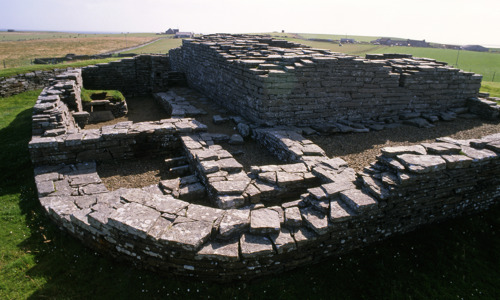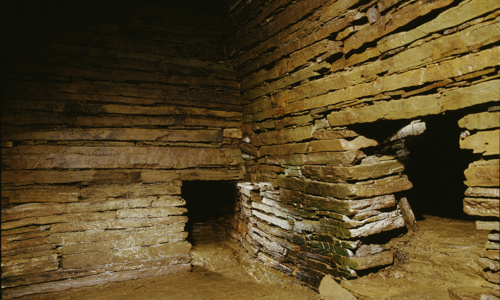History
An unusual cairn
Holm of Papa Westray Chambered Cairn was built 5,000 years ago. It’s an unusual in its size and form, with an extensive, 20m-long central chamber, with 12 cells opening off it. Two of these are double cells.
The tomb was excavated in 1849. A few animal bones were found inside, but no human remains. However, the discovery of 11 decorated stones more than made up for the absence. This is an impressive collection of Neolithic art and has parallels with other sites in Orkney such as Skara Brae, Links of Noltland and the Ness of Brodgar. Neolithic carvings are also found in Irish tombs and may be part of an art-style found across Atlantic Europe.
Four stones had disappeared by the time the cairn passed into State care in 1929. The remaining visible designs include:
- a double ring and conjoined pecked circles with central dots in the south-east end of the main chamber
- two ‘eyebrow’ motifs, on the lintel above the south-east cell, similar to those depicted on a figurine found at the Links of Noltland
- a zigzag and circular motifs on the wall opposite the south-east cell
Island of the dead?
There are three Neolithic burial tombs on the tiny Holm, but none on the larger neighbouring island of Papa Westray. Recent research on sea-level change suggests the islands of Holm and Papa Westray were a single landmass 5,000 years ago, and probably also including Westray itself.
The design of another tomb to the north is similar to that of two early Neolithic stone structures at the Knap of Howar on Papa Westray. In other settings, archaeologists have noted this architectural correspondence between the houses of the living and the tombs of the dead. It seems to have been deliberate.
















